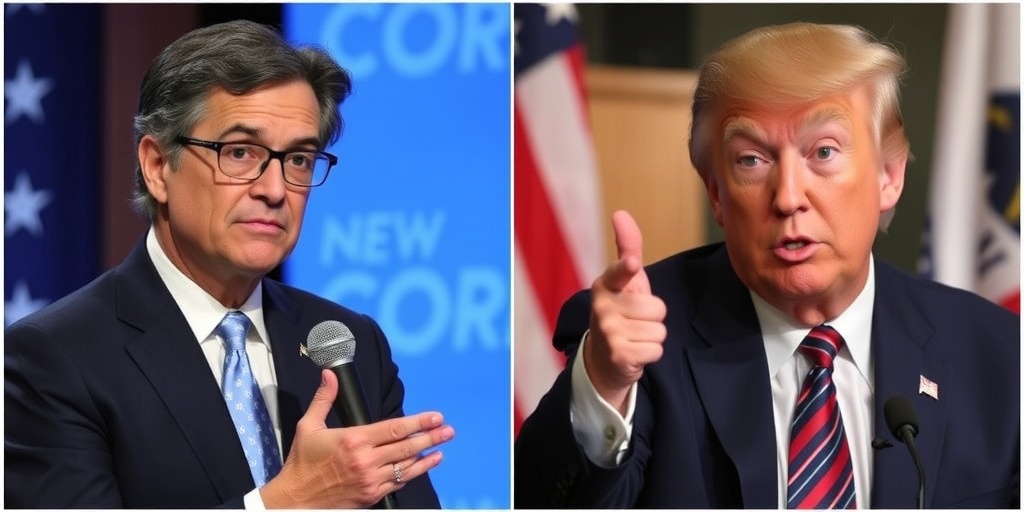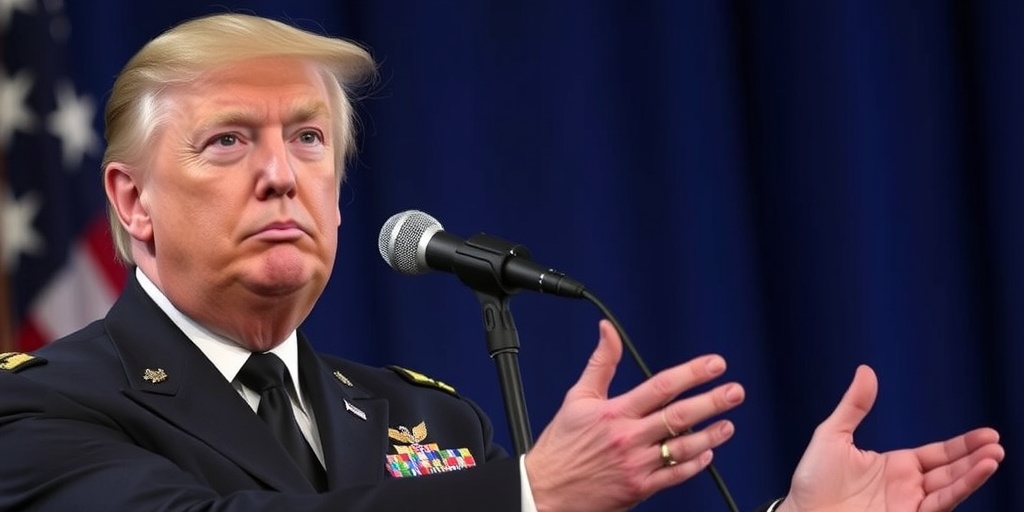Now Reading: Hegseth Dismisses Navy’s Top Officer
-
01
Hegseth Dismisses Navy’s Top Officer
Hegseth Dismisses Navy’s Top Officer

Title: Navy’s First Female Chief of Naval Operations Dismissed by Defense Secretary Hegseth
In a significant shakeup within the military leadership, Defense Secretary Pete Hegseth announced on Friday the dismissal of Admiral Lisa Franchetti, the first woman to hold the prestigious position of Chief of Naval Operations (CNO) in the U.S. Navy. This decision was reportedly made in the wake of President Trump’s own controversial decision to fire General Charles Q. Brown Jr., the chairman of the Joint Chiefs of Staff, just hours earlier.
Hegseth’s statement to the press detailed the leadership changes within the Department of Defense, emphasizing the need for a renewed focus on military readiness and effectiveness. Alongside Admiral Franchetti’s firing, Hegseth also announced the replacements of General James C. Slife, the Air Force Vice Chief of Staff, and the top uniformed legal representatives of the Army, Navy, and Air Force. In his remarks, Hegseth acknowledged both Admiral Franchetti and General Slife for their distinguished careers, thanking them for their service and dedication to the nation.
The rationale behind these changes, according to Hegseth, aligns with a broader strategy under the Trump administration to realign military priorities with the core mission of deterring adversaries, engaging in combat, and winning wars. This sweeping alteration of leadership reflects a shift in military focus that many hope will reinvigorate the Armed Forces.
Admiral Franchetti, who achieved her place in history as the 33rd CNO on November 2, 2023, made strides in a field long dominated by men. According to her official biography, she was commissioned into the Navy in 1985 through the Naval Reserve Officer Training Corps at Northwestern University. Her service began at a unique moment when women were still navigating the integration process within the Navy, having recently gained the right to serve on warships following the end of a longstanding prohibition in 1993.
Throughout her remarkable career, Admiral Franchetti held various pivotal roles, including commanding the destroyer U.S.S. Ross, leading a destroyer squadron, and overseeing two aircraft carrier strike groups, as well as all naval forces stationed in Korea and the Sixth Fleet in the Mediterranean region. Her leadership had been recognized throughout her ascent in rank, illustrating her extensive operational and policy expertise, which were cited as reasons for her initial appointment by President Biden.
The firing of a Chief of Naval Operations, particularly one who has served so recently, is a rare occurrence, adding weight to the implications of this leadership change. The last CNO not to complete a full term was Admiral Mike Mullen, who transitioned to the role of chairman of the Joint Chiefs of Staff in 2007. Historically, this type of dismissal signals a significant shift in military direction, particularly as it pertains to higher command officials.
Admiral Franchetti’s sacking follows a pattern of dismissals and controversies surrounding military leadership during Trump’s second term in office. Notably, Trump had fired another prominent female admiral, Linda L. Fagan, just a day after his second inauguration. Fagan had made headlines previously as the first woman to lead a branch of the Armed Forces as the commandant of the Coast Guard.
The broader context of these leadership changes is not without controversy. Under Trump’s leadership, tensions have risen between the Commander-in-Chief and high-ranking military officers. Reports of animus aimed at notable generals and admirals, including threats directed at former chairman General Mark Milley, point to a potentially tumultuous relationship between the military establishment and the administration. Trump has made public statements implying that Milley should face severe consequences for his interactions with his Chinese counterpart during the January 6 insurrection, heightening scrutiny of military leadership dynamics.
As the military transitions into a new phase of leadership, discussions surrounding gender, diversity, and inclusion within the ranks will continue to resonate. Admiral Franchetti’s tenure, despite its abrupt end, marked a significant victory for women in the military, demonstrating the slow but noticeable changes occurring within the Navy and the Armed Forces as a whole. The appointment of a female CNO—now followed by her dismissal—raises questions about commitment to diversity at the highest levels of military command.
As Secretary Hegseth sets out to find a replacement for Admiral Franchetti and other top officials, the choices made by the Trump administration will undoubtedly shape the trajectory of the U.S. military during a critical time in global geopolitics. With a renewed emphasis on combat readiness, the focus will also be on how the new appointments will continue to address ongoing issues related to inclusivity and representation within the military ranks.
Stay Informed With the Latest & Most Important News
Previous Post
Next Post
-
 01New technology breakthrough has everyone talking right now
01New technology breakthrough has everyone talking right now -
 02Unbelievable life hack everyone needs to try today
02Unbelievable life hack everyone needs to try today -
 03Fascinating discovery found buried deep beneath the ocean
03Fascinating discovery found buried deep beneath the ocean -
 04Man invents genius device that solves everyday problems
04Man invents genius device that solves everyday problems -
 05Shocking discovery that changes what we know forever
05Shocking discovery that changes what we know forever -
 06Internet goes wild over celebrity’s unexpected fashion choice
06Internet goes wild over celebrity’s unexpected fashion choice -
 07Rare animal sighting stuns scientists and wildlife lovers
07Rare animal sighting stuns scientists and wildlife lovers





















